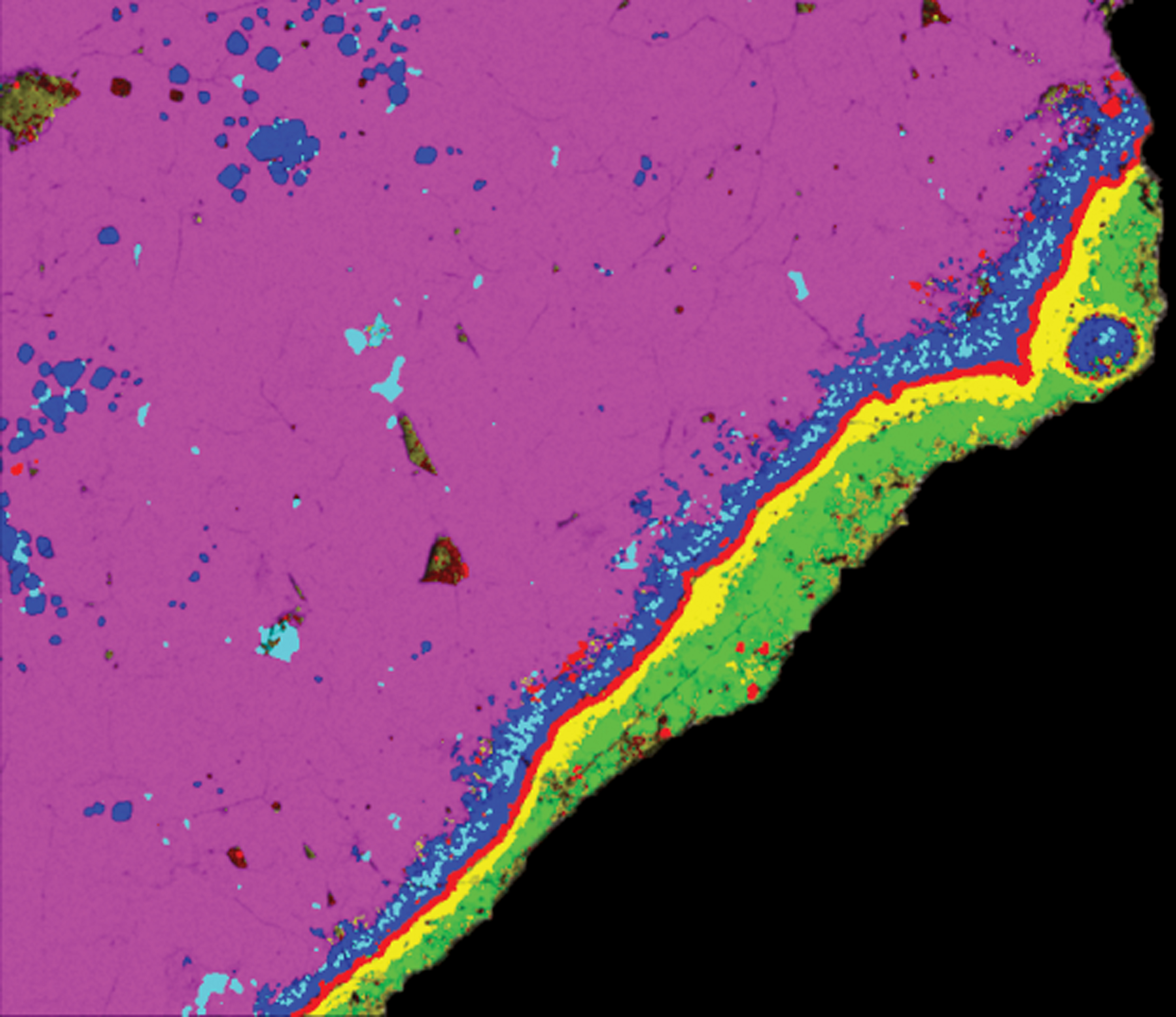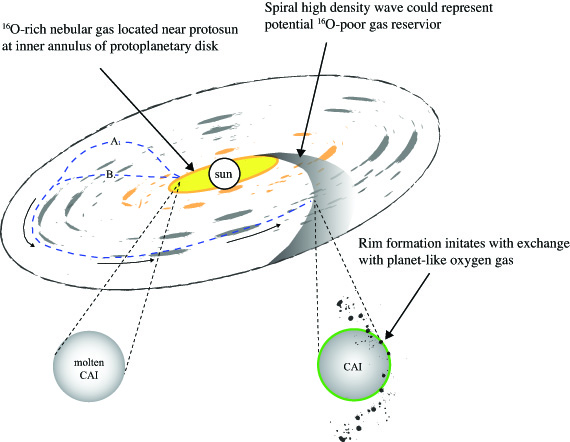Meteorite Clue Opens Window into Solar System Evolution

The dust grains that eventually coalesced into our solar system's planets bounced around like pinballs over vast distances nearly 4.6 billion years ago, a new meteorite study suggests.
Scientists studying a tiny chunk of a meteorite say it likely formed close to the sun, was ejected near today's asteroid belt, and then returned to the scorching inner reaches thereafter. The results should help astronomers better understand the early days of our solar system, and could shed light on planet-formation processes in general, researchers said.
"This has implications for how our solar system and possibly other solar systems formed and how they evolved," the study’s lead author, Justin Simon, of NASA's Johnson Space Center in Houston, said in a statement. "There are a number of astrophysical models that attempt to explain the dynamics of planet formation in a protoplanetary disk, but they all have to explain the signature we find in this meteorite."

Studying a cosmic pea
Simon and his colleagues investigated a pea-size piece of the Allende meteorite, a hunk of space rock that crash-landed in Mexico in 1969. The bit they looked at is what's known as a calcium-aluminum-rich inclusion, or CAI. CAI's often get fused into larger meteorite pieces such as Allende. [Spectacular Leonid Meteor Shower Photos]
Scientists believe CAI's were among the first solids to condense from the swirl of gas and dust as the planets were forming, so studying them can yield clues about our solar system's early days, researchers said.
The team studied the composition of a 4.57 billion-year-old inclusion in detail with a tiny probe, measuring the concentrations of two different oxygen isotopes in the space rock's various layers. Isotopes are versions of the same element that have different numbers of neutrons in their atomic nuclei.
Get the Space.com Newsletter
Breaking space news, the latest updates on rocket launches, skywatching events and more!
The concentrations of these two isotopes — oxygen-16 and oxygen-17 — varied from place to place while the solar system was forming. So by analyzing their relative abundances in the different parts of the CAI, the team was able to learn a great deal about its travels — which turned out to be extensive.
"If you were this grain, you formed near the protosun, then likely moved outward to a planet-forming environment, and then back toward the inner solar system or perhaps out of the plane of the disk," Simon said. "Of course, you ended up as part of a meteorite, presumably in the asteroid belt, before you broke up and hit the Earth."
The team reports its results in tomorrow’s (March 4) issue of the journal Science.
Understanding our solar system's youth
The Allende meteorite findings are consistent with some theories about how dust grains formed and moved about in our solar system's infancy, eventually seeding the formation of planets, researchers said.
One of these theories depicts the early protoplanetary disk as a sort of washing machine, with the sun's powerful magnetic fields churning up gas and dust and spreading the stuff far and wide. Heated-up grains from near the sun and cooler dust from farther out were eventually incorporated into asteroids and planets, the theory goes.
"There are problems with the details of this model, but it is a useful framework for trying to understand how material originally formed near the sun can end up out in the asteroid belt," said study co-author Ian Hutcheon, of Lawrence Livermore National Laboratory in Livermore, Calif.
The team hopes to crack open and study more meteorite inclusions to help determine whether the Allende sample is unique, or if its jet-setting youth is typical, researchers said.
Follow SPACE.com for the latest in space science and exploration news on Twitter @Spacedotcom and on Facebook.
Join our Space Forums to keep talking space on the latest missions, night sky and more! And if you have a news tip, correction or comment, let us know at: community@space.com.

Space.com is the premier source of space exploration, innovation and astronomy news, chronicling (and celebrating) humanity's ongoing expansion across the final frontier. Originally founded in 1999, Space.com is, and always has been, the passion of writers and editors who are space fans and also trained journalists. Our current news team consists of Editor-in-Chief Tariq Malik; Editor Hanneke Weitering, Senior Space Writer Mike Wall; Senior Writer Meghan Bartels; Senior Writer Chelsea Gohd, Senior Writer Tereza Pultarova and Staff Writer Alexander Cox, focusing on e-commerce. Senior Producer Steve Spaleta oversees our space videos, with Diana Whitcroft as our Social Media Editor.









